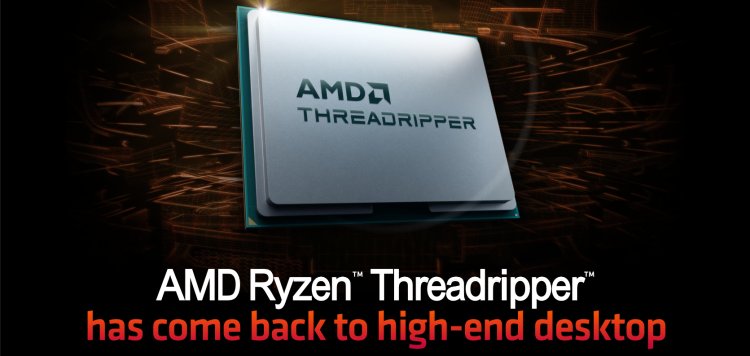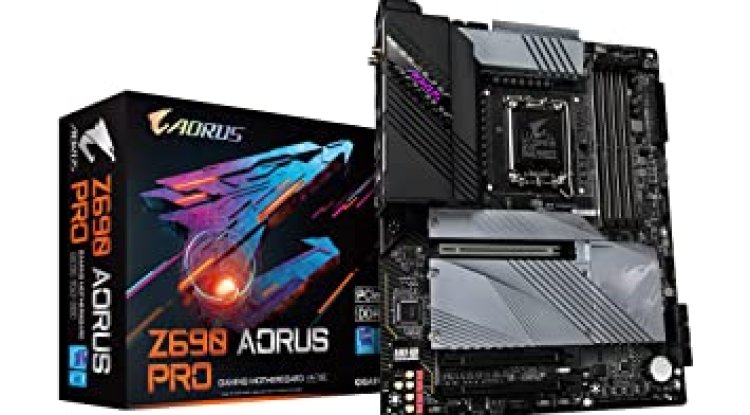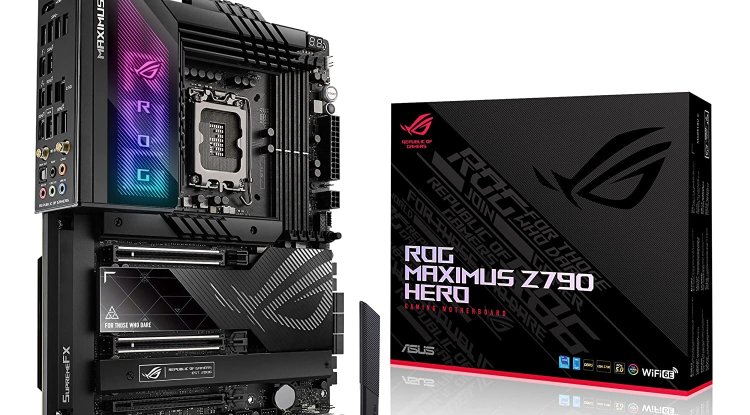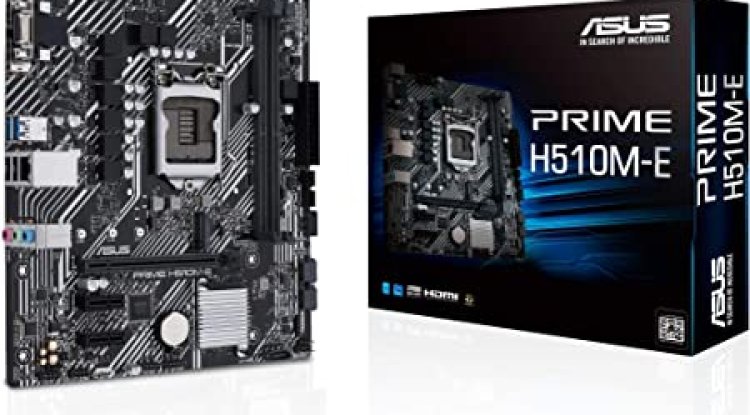"Comprehensive Review of AMD's Ryzen Threadripper 7980X and 7970X CPUs: A Deep Dive into High-End Desktop Computing"
In the world of high-end computing, AMD's Ryzen Threadripper 7980X and 7970X stand out with their staggering core counts and performance capabilities. Priced at $5,000 and $2,500 respectively, these CPUs are designed for users who need extreme computational power. Although we couldn't review the 24-core TR 7960X, the focus remains on the 64-core 7980X and 32-core 7970X models, highlighting their capabilities in AMD's high-end desktop lineup.

Threadripper 7000 Series: A Complex Ecosystem
The Threadripper 7000 series marks a departure from previous generations by splitting into HEDT and Pro series. The HEDT models under review and the Pro series, with up to 96 cores, represent AMD's commitment to providing high-performance options for different market segments. The Pro series offers more PCIe lanes and memory channels but at a higher cost.
Technical Specifications: A Quick Overview
The TR 7980X and 7970X feature impressive specifications, with the 7980X boasting 64 cores and 128 threads, and the 7970X with 32 cores and 64 threads. Both models include a substantial amount of L3 cache and support PCIe 5.0 lanes. The core configurations and boost frequencies highlight AMD's focus on delivering high-speed and efficient performance.
Platform Compatibility and Memory Support
A significant update in the Threadripper 7000 series is the shift to a new 4844-pin sTR5 socket, incompatible with the previous sWRX8 platform. The series supports two chipsets, WRX90 and TRX50, catering to different CPU categories. This change brings versatility in PCIe lane count and memory channel support, enhancing the system's overall performance capabilities.
Memory Requirements and Testing Setup
Threadripper 7000 processors support up to 2TB of 8-channel memory on WRX90 motherboards and up to 1TB of 4-channel memory on TRX50 boards. Both platforms use registered DIMMs, requiring DDR5 RDIMM, LRDIMM, or 3DS RDIMM. For testing, AMD provided G.Skill's Zeta R5 Neo DDR5-6400 RDIMM memory, highlighting the high-performance capabilities these CPUs are designed to harness.
Pricing and Memory Considerations
While the Threadripper 7980X and 7970X offer significant memory capacities, the cost of fully equipping these systems can be prohibitive, especially for higher-spec memory kits. This pricing aspect is crucial for potential buyers, considering the investment required for optimal performance.
Detailed Analysis of Threadripper 7980X and 7970X
The Threadripper 7980X, with its 64 cores, 128 threads, and substantial L3 cache, is a powerhouse for high-performance computing. Its boost clock of 5.1 GHz underlines its capability for demanding tasks. Similarly, the 7970X, with its 32 cores and 64 threads, presents a more cost-effective yet powerful option for users needing high core counts. The uniform TDP across these models emphasizes their efficiency and power management.
Testing Methodology
For testing, we used the Asus Pro WS TRX50-Sage WiFi with 128GB of DDR5-6400 CL32 memory and the GeForce RTX 4090. The cooling solution had to be improvised due to a last-minute change, but we ensured that the testing conditions were optimal for a fair assessment of the CPUs' performance.
Productivity Benchmarks: Cinebench and Blender
In Cinebench multi-core tests, the 7980X showed a significant performance advantage over its predecessor and other models, illustrating its prowess in handling multi-threaded applications. The Blender Open Data results mirrored these findings, with the 7980X demonstrating its superiority in graphical rendering tasks.
7-zip Compression and Decompression Tests
The Threadripper 7980X and 7970X exhibited remarkable performance in 7-zip compression and decompression tests. These results underscore the CPUs' efficiency in handling data-intensive tasks, making them ideal for users involved in data management and analysis.
Performance in Adobe After Effects and Photoshop
In lightly threaded applications like Adobe After Effects and Photoshop, the Threadripper CPUs showed respectable performance, though not as dominant as in multi-threaded tasks. This finding is crucial for users whose workflows involve such applications.
Premiere and Browser Benchmark Tests
In the Puget systems benchmark for Premiere, the new Threadripper CPUs performed better than standard desktop parts but didn't exhibit a significant margin. In browser benchmark tests, which simulate general usage, the CPUs were on par with standard desktop processors, highlighting their versatility.
Conclusion: Assessing the Threadripper 7980X and 7970X for High-End Users
In conclusion, AMD's Ryzen Threadripper 7980X and 7970X are formidable players in the high-end CPU market. The 7980X, with its 64 cores and 128 threads, establishes itself as a leader in multi-threaded performance, making it an ideal choice for professionals engaged in intensive computational tasks, 3D rendering, and data processing. Its high TDP and impressive clock speeds underscore its capability to handle demanding workloads without compromising on efficiency.
The 7970X, while offering half the core count of the 7980X, still delivers substantial power and is a more budget-friendly alternative for users requiring high core counts but not the extreme performance of the 7980X. Its enhanced base and boost clocks make it a strong contender in both multi-threaded and single-threaded applications.
Performance in Specialized Applications
In specialized applications like Adobe Premiere and Photoshop, the Threadripper CPUs demonstrate competent performance, though not as groundbreaking as in tasks that fully leverage their multi-core capabilities. This suggests that while these CPUs are overkill for general computing or lightly threaded tasks, they shine in environments where high computational power is paramount.
Memory and Storage Considerations
A critical aspect to consider for potential buyers is the memory and storage requirements. The need for registered DIMMs and the high cost associated with high-capacity memory kits can significantly add to the overall investment in a Threadripper-based system. Additionally, the choice of motherboard chipset (WRX90 or TRX50) will dictate the maximum memory and PCIe lane support, which is crucial for users planning to maximize the capabilities of these CPUs.
Compatibility and Future-Proofing
The shift to the new 4844-pin sTR5 socket means that users upgrading from previous Threadripper generations will need to invest in new motherboards. This change, while necessary for supporting the advanced features of the 7000 series, does add an extra layer of consideration for those looking to upgrade.
Value Proposition and Target Audience
The value proposition of the Threadripper 7980X and 7970X is clear: they offer unparalleled performance in high-end computing tasks but at a premium price. They are targeted at professionals and enthusiasts who require extreme processing power, such as in video editing, 3D rendering, scientific simulations, and complex data analysis.
Final Verdict
The Ryzen Threadripper 7980X and 7970X set new standards in high-end desktop computing. Their performance in productivity benchmarks, coupled with their robust build and support for advanced memory and PCIe configurations, make them highly desirable for users who demand the best. However, their high cost, specific memory requirements, and new socket compatibility are factors that potential buyers must carefully consider. In summary, for those who need the utmost in computational power and are willing to invest in the supporting infrastructure, AMD's latest Threadripper offerings are unmatched in performance and capability.





































